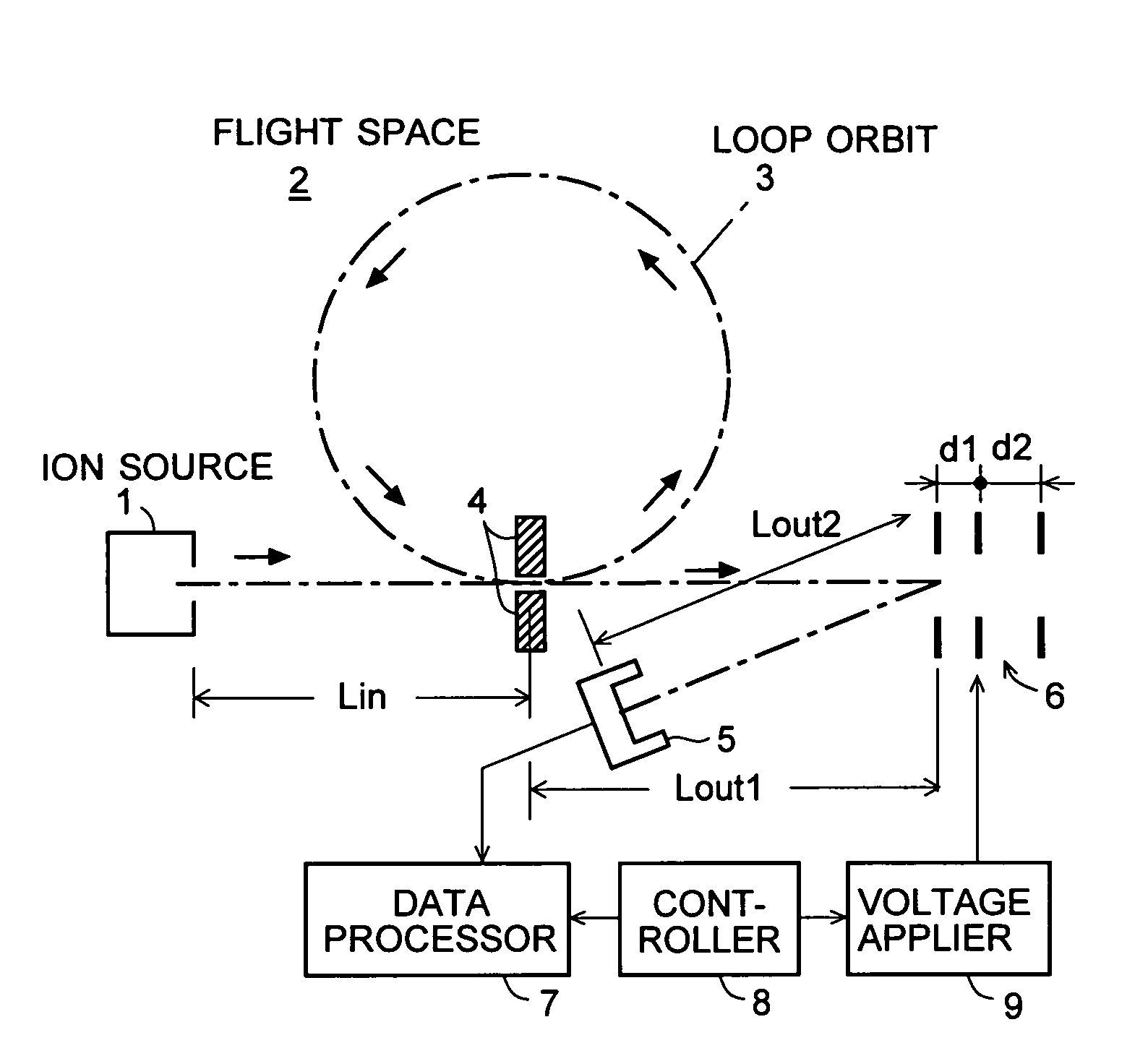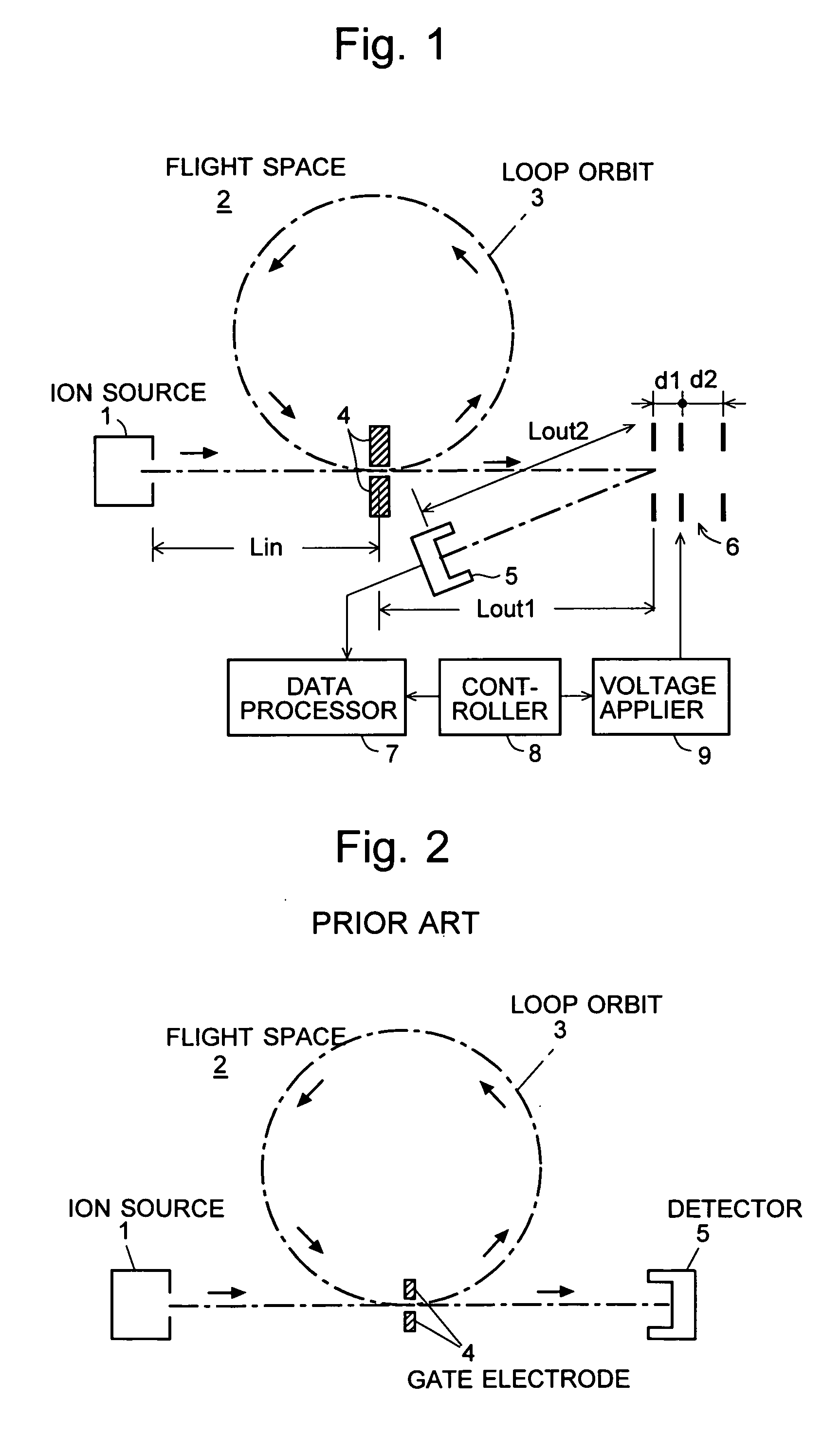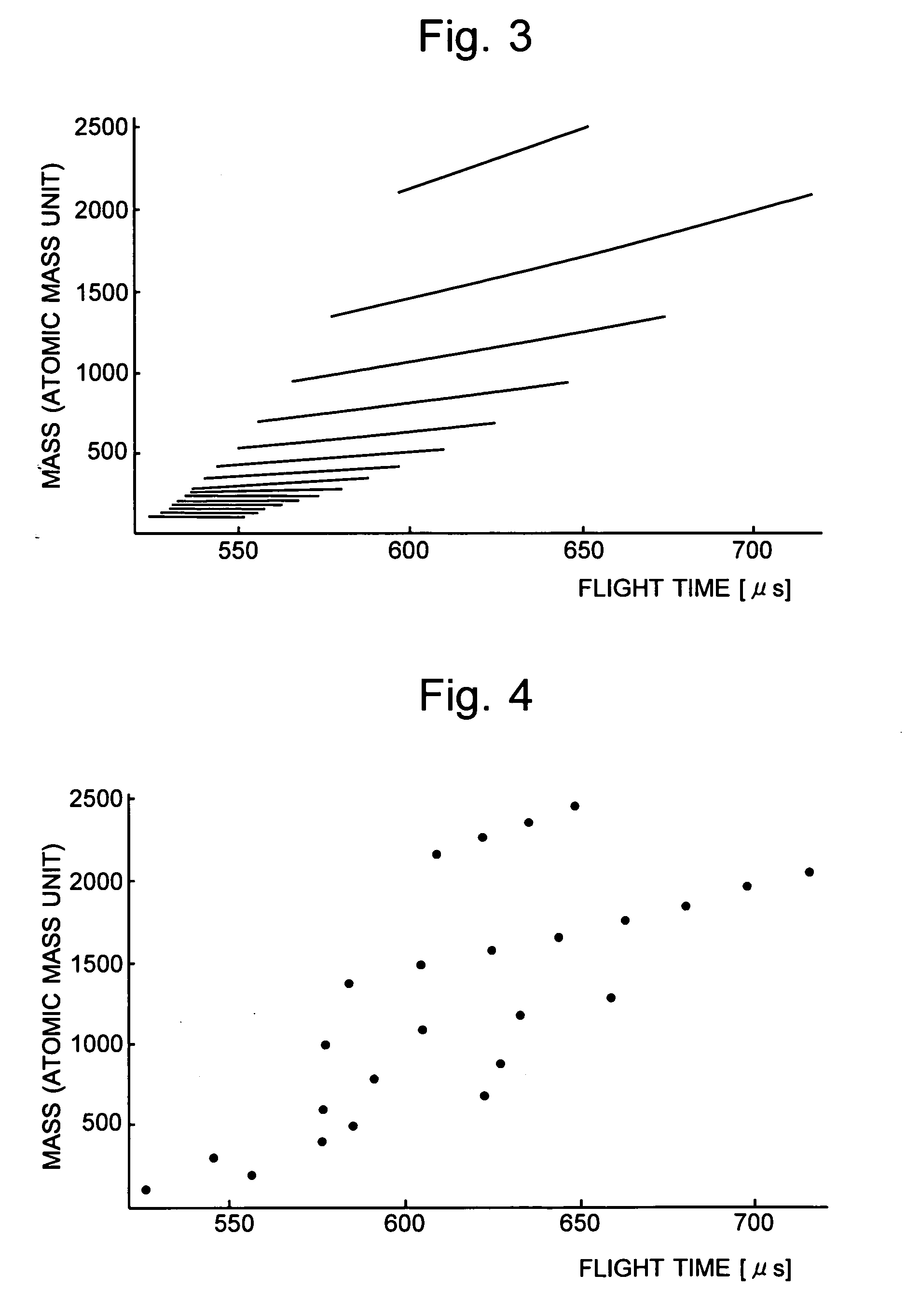Time of flight mass spectrometer
a mass spectrometer and time-of-flight technology, applied in the field of time-of-flight mass spectrometer, can solve the problems of difficult to incorporate a long straight path in a tof-ms, tof-mss using any type of loop orbit, and problems, etc., to achieve the effect of improving the accuracy of mass analysis and high reliability
- Summary
- Abstract
- Description
- Claims
- Application Information
AI Technical Summary
Benefits of technology
Problems solved by technology
Method used
Image
Examples
embodiment 1
[0032] An embodiment (Embodiment 1) of the time of flight mass spectrometer according to the present invention is described with reference to the attached drawings. FIG. 1 is a schematic diagram of the TOFMS of the present embodiment. It should be noted that those components which are identical or corresponding to some components shown in FIG. 2 are denoted by the same numerals.
[0033] In FIG. 1, various kinds of ions extracted from the ion source 1 are injected through the gate electrode 4 into the loop orbit 3 in the flight space 2. Then, after flying in the loop orbit 3 once or multiple times, the ions leave the loop orbit 3 and are ejected from the flight space 2 immediately after they pass through the gate electrode 4. Outside the exit of the flight space 2, a reflector 6 consisting of reflecting electrodes is located for generating an electric field, which repels the ions toward the detector 5. Under the command of the controller 8, the voltage applier 9 varies the voltage app...
embodiment 2
[0060] Another embodiment (Embodiment 2) of the time of flight mass spectrometer according to the present invention is hereby described. The difference between Embodiment 1 and Embodiment 2 exists in the steps of the analysis carried out by the TOFMS. The following description explains this difference, referring to the flow chart shown in FIG. 8.
[0061] First, as described previously, the voltage V1 applied to the first stage of the reflector 6 is set at a predetermined level (e.g. 2100 [V]), and the first round of the measurement is carried out to collect a first set of flight time data (Step S11). Next, the voltage V1 applied to the first stage of the reflector 6 is changed to a new level (e.g. 2050 [V]), and the second round of the measurement is carried out to collect a second set of flight time data (Step S12). Subsequently, the voltage V1 applied to the first stage of the reflector 6 is again changed to a new level (e.g. 2000 [V]), and the third round of the measurement is car...
PUM
 Login to View More
Login to View More Abstract
Description
Claims
Application Information
 Login to View More
Login to View More - R&D
- Intellectual Property
- Life Sciences
- Materials
- Tech Scout
- Unparalleled Data Quality
- Higher Quality Content
- 60% Fewer Hallucinations
Browse by: Latest US Patents, China's latest patents, Technical Efficacy Thesaurus, Application Domain, Technology Topic, Popular Technical Reports.
© 2025 PatSnap. All rights reserved.Legal|Privacy policy|Modern Slavery Act Transparency Statement|Sitemap|About US| Contact US: help@patsnap.com



